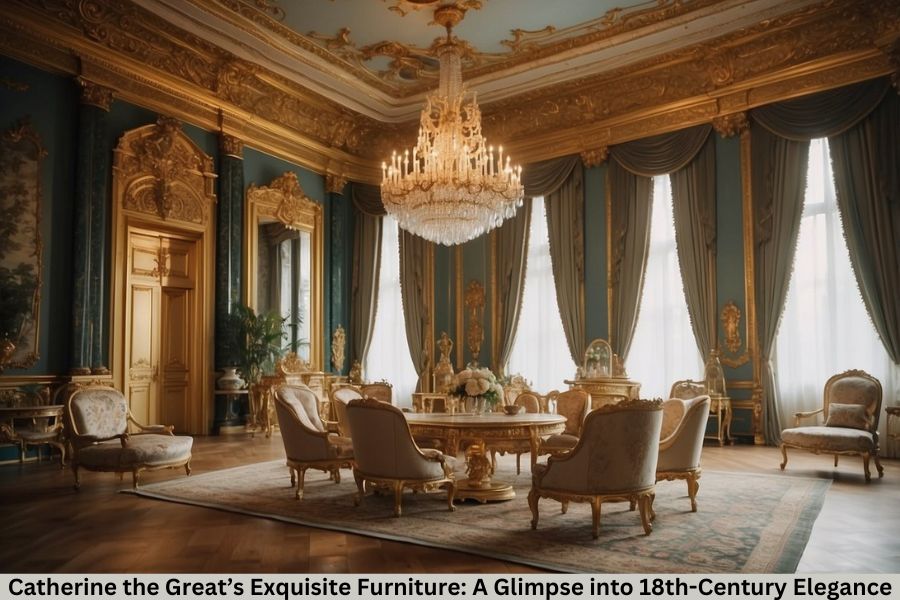When we think about Catherine the Great, her contributions to Russian politics, art, and tradition immediately come to mind. As a ruler of the 18th century, her love for grandeur and her forward-wondering vision extended to her furnishings, which have become symbols of her sophistication and the cultural renaissance she led. Let’s dive into the world of Catherine the Great’s furnishings to discover their artistry, layout, and legacy.
The Legacy of Catherine the Great
Catherine the Great dominated Russia from 1762 to 1796 and is remembered for her transformative impact on Russian society. She became an avid patron of the humanities, commissioning palaces, artworks, and fixtures that pondered her taste and ambition to modernize Russia. Her reign marked a flourishing Russian lifestyle, and her furniture is a top instance of this era’s aesthetic brilliance.
The Furniture of Catherine the Great
Catherine’s furnishings collection is a mix of creative expression and luxurious craftsmanship. Created by using a number of the most talented artisans of her time, her furniture displays her desire to exhibit Russia as a sophisticated empire even as drawing concepts from European patterns.
Characteristics of Catherine the Great’s Furniture
Opulence and Grandeur
Catherine’s furniture becomes a visible illustration of her strength and wealth. Intricate carvings, gold leaf, and lavish detailing embellished maximum pieces, making them fit for a monarch.
European Influence
As a gourmet of European subculture, Catherine followed layout traits from France and England, incorporating elements of Rococo and early Neoclassicism into her fixtures.
Use of Exotic Materials
The substances used in her furnishings—mahogany, gilt bronze, and inlaid precious stones—show off her love for uncommon and luxurious finishes.
Notable Furniture Pieces
The Green Drawing Room Set
One of the most well-known collections is the Green Drawing Room furnishings within the Winter Palace. Featuring wealthy inexperienced upholstery and gilded frames, this set exemplifies elegance.
Gold-Gilded Cabinets
These cabinets, embellished with complex carvings and gold detailing, have been now not just purposeful but also artistic masterpieces.
Marble-Topped Tables
Marble-crowned tables with intricate bases spotlight her desire for mixing capability with grandeur.
The Role of Furniture in Russian Palaces
Furniture in Catherine’s palaces wasn’t pretty much software—it turned into a statement of energy and flavor. Chairs, tables, and shelves have been strategically positioned to beautify the grandeur of her living spaces at the same time as ensuring consolation and value.
Iconic Designers and Collaborators
Catherine worked with renowned designers like Charles Cameron, a Scottish architect, who introduced Neoclassical impacts to her initiatives. She also hired skilled Russian craftsmen, fostering nearby talent even as embracing worldwide tendencies.
Catherine’s Contributions to Neoclassicism
Catherine played a pivotal position in popularizing Neoclassicism in Russia. Her furnishings, characterized by smooth lines and classical motifs, frequently reflected the design elements of her grand architectural projects just as the Tsarskoye Selo Palace.
Influence of Catherine’s Furniture on Modern Design
The undying beauty of Catherine’s furnishings encourages a modern-day interior layout. From replicas of her chairs to cutting-edge pieces inspired by her aesthetic, her legacy is evident in nowadays’s layout global.
Preservation of Catherine’s Furniture
Today, many portions of Catherine’s series are preserved in museums which include the State Hermitage Museum in St. Petersburg. These treasures are meticulously maintained, allowing traffic to comprehend their historical and artistic value.
Modern Interpretations and Reproductions
The demand for fixtures stimulated through Catherine the Great’s fashion stays high. Modern reproductions seize the essence of her aesthetic, offering a hint of 18th-century elegance to cutting-edge homes.
Conclusion
Catherine the Great’s furnishings are greater than simply functional décor; it’s a testimony to her imaginative and prescient, power, and love for splendor. Through her outstanding flavor and patronage, she left an enduring impact on furnishings layout and craftsmanship, inspiring generations to return.
FAQs
Who designed Catherine the Great’s furniture?
Renowned designers like Charles Cameron and professional Russian craftsmen collaborated on her furnishings.
Where can I see Catherine the Great’s furnishings nowadays?
Many portions are displayed in the State Hermitage Museum in St. Petersburg, Russia.
What substances had been commonly used in her furnishings?
Luxurious substances like mahogany, gilt bronze, and marble were often used.
How did Catherine affect furniture design trends?
Her love for Neoclassicism and European styles set developments that formed 18th-century fixtures.
Are there replicas of her furniture available these days?
Yes, modern-day reproductions of her fixtures are popular among collectors and indoor designers.

